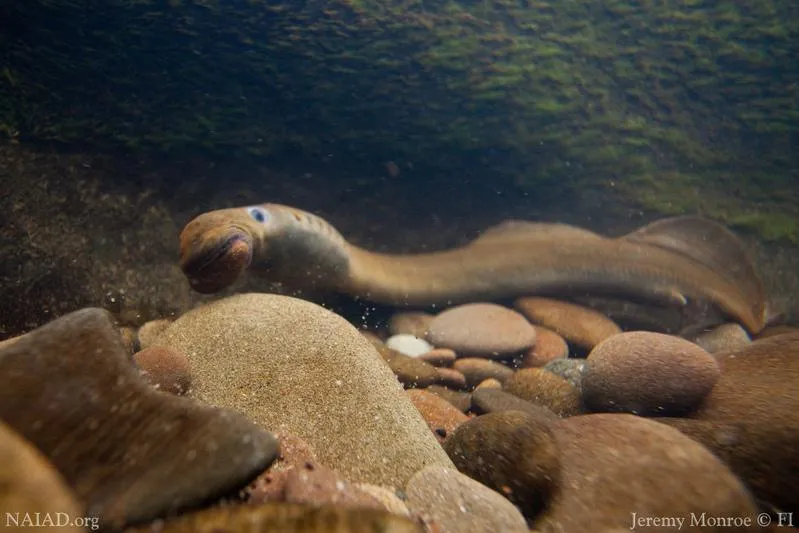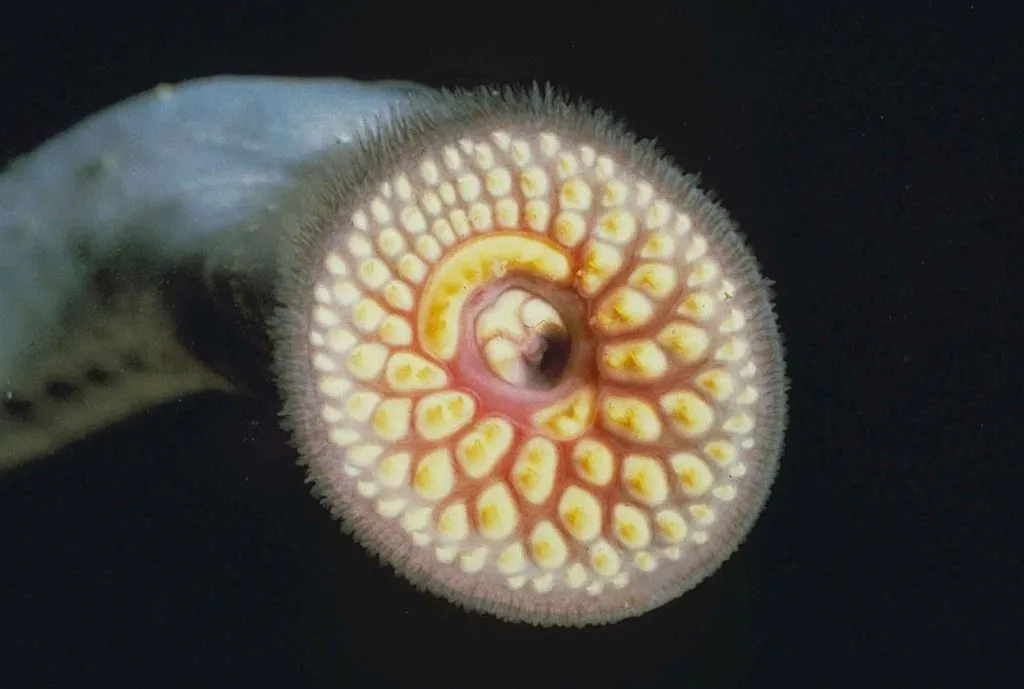It’s Lamprey Breeding Time in Britain
The bloodsucking fish are returning rivers that were once too polluted for them to live in
/https://tf-cmsv2-smithsonianmag-media.s3.amazonaws.com/filer/f0/80/f0804961-f4e3-4f49-a7da-11a0e330c93e/lamprey.jpg)
For nearly 200 years, the eel-like lamprey has been an increasingly rare sight in British water. Though its rivers were once thriving breeding grounds for the toothy, parasitic fish, water pollution from mills and factories drove them from the region. But thanks to hard work from conservationists, the wriggly beasts are once again returning to their traditional hatcheries.
Lampreys aren't known for their adorable looks. The slithery creatures resemble snakes or eels, but with a permanently-open mouth. Both the mouth and tongue are ringed with razor-sharp, spiny teeth. While some small freshwater species of brook lamprey feed on algae, their larger cousins are vicious parasites that use their rows of teeth to latch onto fish and drain them of their blood, Paul Brown reports for The Guardian. But what blood-sucking parasites may lack in looks, they make up for in history.
Lampreys are thought to have existed since before the time of the dinosaurs, and some fossils date back 360 million years. For hundreds of years, lampreys were plentiful in European rivers, where they returned to spawn every year in the spring and were considered delicacies fit for royalty. For centuries, it was traditional for the city to send a lamprey pie to the British king or queen for Christmas, Lewis Smith wrote for The Guardian.
But during the Industrial Revolution, mills and factories started to pollute British rivers, driving lampreys away. Now, the ugly-looking fish are considered endangered throughout Europe.

“For the last 200 years, some rivers have not been capable of supporting lamprey species as a result of water quality, poor habitat and manmade barriers,” Simon Toms, a fisheries expert at the United Kingdom’s Environment Agency, told Smith. “Now that water quality has improved and some of these barriers have been removed we are seeing lampreys return to the upper reaches of rivers such as the Ouse, Trent, and Derwent, where they were absent as recently as 30 years ago.”
Like salmon, sea-going species of lamprey are born in freshwater and return when it is time to mate during May and June. During the spring, the snakelike fish dig trenches in shallow parts of rivers and streams, where they can lay nearly 200,000 eggs at a time before dying. When the larvae hatch, they make their way downstream, heading for deeper waters and more populous hunting grounds, Brown writes.
In recent years, cleaning up waters and removing man-made obstacles has helped bring the lamprey back to British waters. Officials have also tested out special “lamprey tiles” for them to grip on as they struggle against the current, similar to how fish ladders and weirs give salmon and other fish an easier time swimming upstream, according to the Belfast Telegraph.
Across the pond in the United States’ Great Lakes, the sight of a lamprey won’t bring a smile to any conservationist’s face. During the 1920s, the parasites invaded the inland fisheries and have become permanent fixtures, disrupting ecosystems and becoming a thorn in the side of local fishermen.

While they may be a European delicacy, lampreys are seen as pests in the U.S. and Canada, and officials often use specially-formulated “lampricides” to kill the parasites’ larvae before they can wreak havoc on fishing stocks, according to the Manitowoc Herald Times Reporter. But while lampreys may not be so welcome in the Americas, their recent return to British waters is a positive sign for many conservationists.
"These are fascinating fish, living fossils, that have a special place in the history and traditions of this country,” Toms tells the Belfast Telegraph. “We hope that with a helping hand from us they will be able to thrive in England's rivers once again."